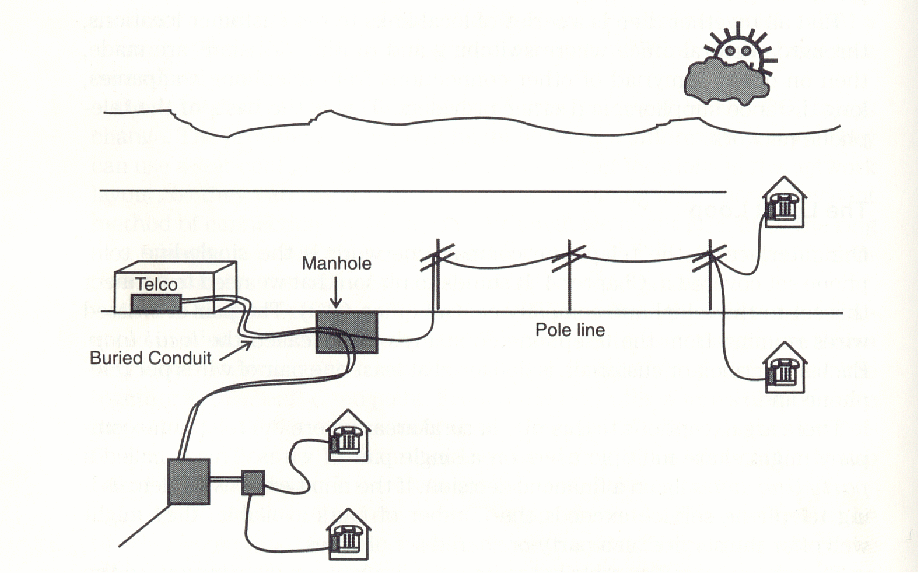The Local Loop
Our interface to the telephone company network is the single-line telephone set. It stands to reason that we need to connect this set to the telephone company central office (CO). The pair of twisted wires running from the telephone company’s CO is called the local loop. Each subscriber, or customer, is delivered at least one pair of wires per telephone line.
There are exceptions to this rule in rural areas where the telephone company might share multiple users on a single pair of wires. This is called a party line and is again a financial decision. If the number of users demanding telephone service exceeds the number of pairs available, they might well offer the service on a party or shared set of wires.
The phone company distributes its outside plant, or distribution, to the customer by running large bundles of twisted pairs toward the customer location. This is done using feeders, which are composed of 50 to over 3000 pairs of wires.
The feeders are run to splice points or breakout points called manholes or handholes. At this point, the splicing of two reels of cable will take place, assuming that the cable on a single reel was not sufficient. A lateral distribution can also take place here. Lateral distribution is the breakout of a number of pairs to run in a different direction. The lateral distribution or branch feeder is then strung to various customer locations. The end of the pair to the final customer location is called the customer pair or station drop.
It is in this outside plant, from the CO to the customer location, that 90% of all problems will occur. This is not to imply that the telco is doing a lousy job of delivering service to the customer. These cables are exposed more to cable cuts because of construction (commonly called backhoe fade), flooding at the splice locations, rodent damage, and many other risks.
In the analog dialup telephone network, each pair of the local loop is designed to carry a single telephone call to service voice conversations. This is a proven technology that works for the most part, and continues to get better as the technologies advance. The cables can be delivered via a telephone pole, buried conduit, or direct buried cables. Either way, the service is one that we are familiar with and feel comfortable with.
What has just been described is the connection at the local portion of the network. From there the local connectivity must be extended out to other locations in and around a metropolitan area, or across the country. The connections to other types of offices are then required.
This introduction is meant to teach you about the functions and technology of a Central Office.
Sound
Analog to Digital
Bandwidth
Facilities Network
Traffic Networks
Public Switched
The Telephone Network
A Topology of Connection
Network Hierarchy (pre 1984)
Network Hierarchy (post 1984)
North American Numbering Plan
International Numbering
The Subscriber Extension
Private Networks
Hybrid Networks
Local Access and Transport Areas
Wiring Connections: Hooking Things Up
Types of Communication
Signaling (SS7)
Lines Vs. Trunks
Loop Start
Calling Procedures
Ground Start
E&M Signaling
Foreign Exchange Signal
DID
DOD
FX
OPX
Wats

